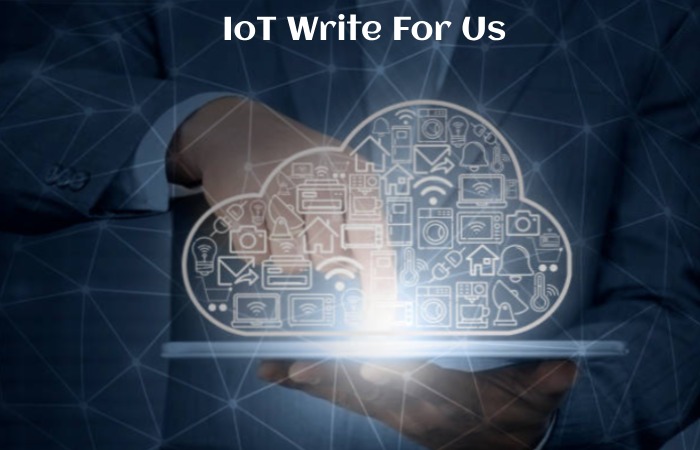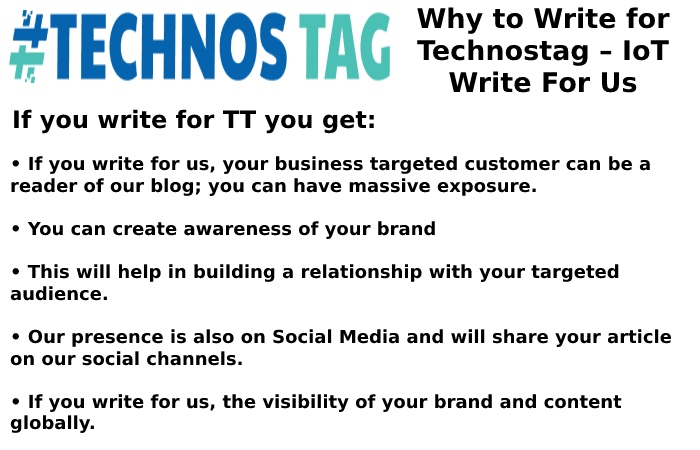IoT Write For Us

IoT refers to the device’s sensors, processing ability, software, and other technologies, data can be connected and exchanged with different devices and systems over the Internet or other communications networks. The Internet of Things includes communication, electronics, and the computer science engineering.
In the IoT, the integrator and decision maker are always human beings, so it is a personalized process tailored to the user. With AI, devices use data to learn and make decisions based on past user behavior. The more data there is, the better the AI decisions. For example, for the AI to identify the gender of people, you have to feed it photos of women and men. As it receives more photos, the AI can autonomously decide, with increasing precision, whether there is a woman or a man in each image.
With A IoT, the vast amount of data collected by sensors is combined with AI methods so that the system can learn from the behavior of users and the environment and thus offer better services. Most A IoT systems work in the cloud or around the gateway, but there is also a more innovative method where AI takes place on edge devices. This last method is called Tiny ML. With it, IoT devices can keep their data in their local environment; they don’t need internet connectivity, and the system can respond much faster. On the other hand, Tiny ML procedures face several limitations, such as low power consumption (a device can work for a whole year with only a tiny battery, type CR2032) and limited processing power.
How to Submit Your Articles ?
To submit your article at technostag.com , you can send an email or pitch us at contact@technostag.com.
Why Write for Technostag – IoT Write For Us
Search Terms Related to IoT Write for Us
- sensors
- Internet
- misnomer
- technologies
- ubiquitous computing
- commodity sensors
- technology
- digital
- machine learning
- embedded systems
- al
- wireless sensor networks
- automation
- home
- building automation
Search Terms for IoT Write for Us
- IoT Write For Us
- IoT Guest Post
- IoT Submit Post
- IoT Contribute Post
- Submit An Article IoT
- IoT Write For Us
- IoT Guest Post
- IoT Submit Post
- IoT Contribute Post
- IoT Suggest A Post
- IoT + Write For Us
- IoT + Guest Post
- IoT + Submit Post
- IoT + Contribute Post
- IoT Guest Author
- Write For Us + IoT
- Guest Post + IoT
- Submit Post + IoT
- Contribute Post + IoT
- Writers Wanted Security
- Write For Us Energy IoT
- Guest Post Automation
- Submit Post Smart homes
- Contribute Post Machine learning
- Become A Guest Blogger Technology
Article Guidelines on Technostag – IoT Write For Us
- We at Technostag welcomes fresh and unique content related to IoT.
- Technostag allow a minimum of 500+ words related to IoT.
- The editorial team of Technostag does not encourage promotional content related to IoT.
- For publishing article at Technostag email us at contact@technostag.com.
- Technostag allows articles related to Latest Technology, Gadgets, Artificial Intelligence, Gaming, Start-Up, Cyber Security and many more
Related Pages
Gadgets Write For Us
Machine Learning Write For Us
Digital Marketing Write For Us
Anti Virus Write For Us
Gaming Write For Us
Saas Write For Us
Cryptocurrency Write For Us
Smartphone Write For Us
E-commerce Write For Us
Software Write For Us
Data Analysis Write For Us
Laptop Write For Us
Artificial Write For Us
Bitcoin Write For Us
Air Cooler Write For Us
AI Technology Write For Us

